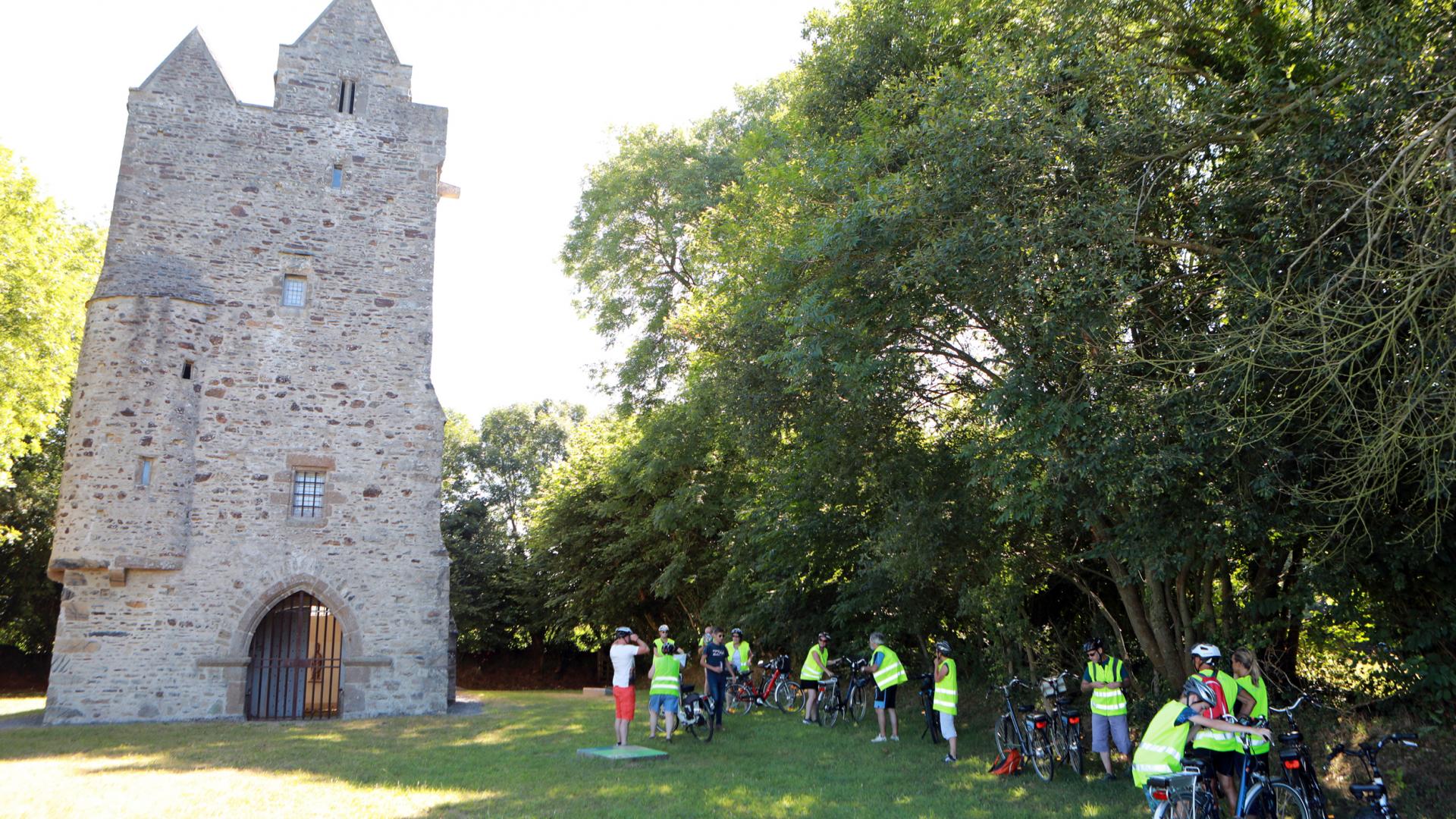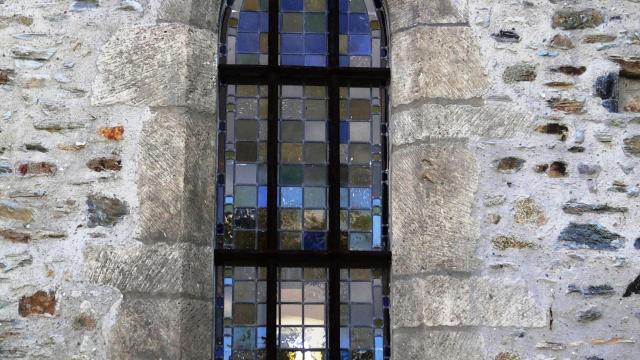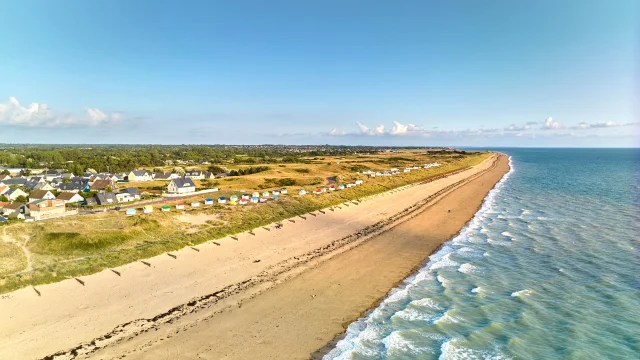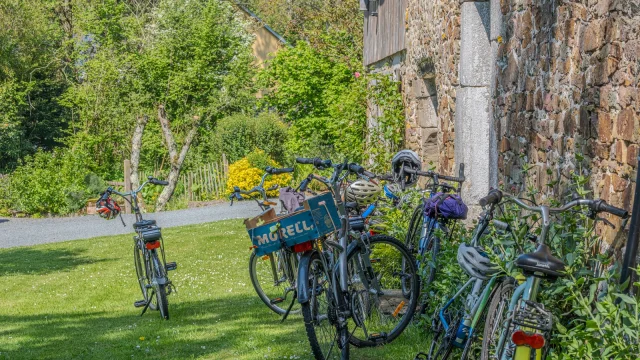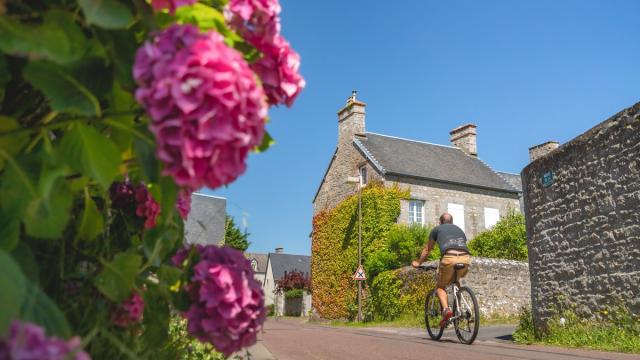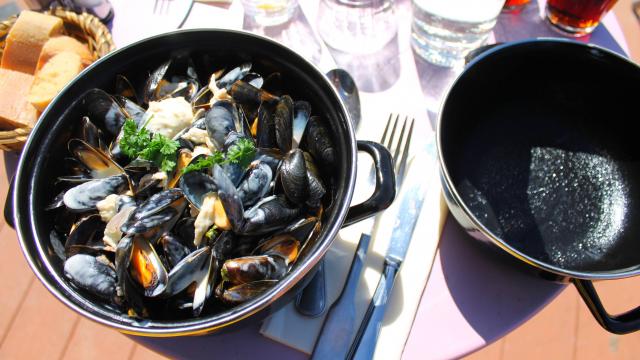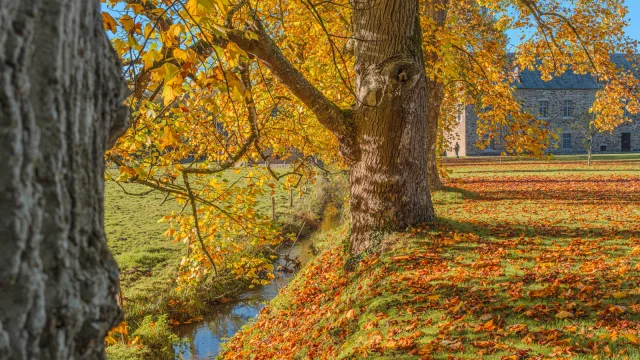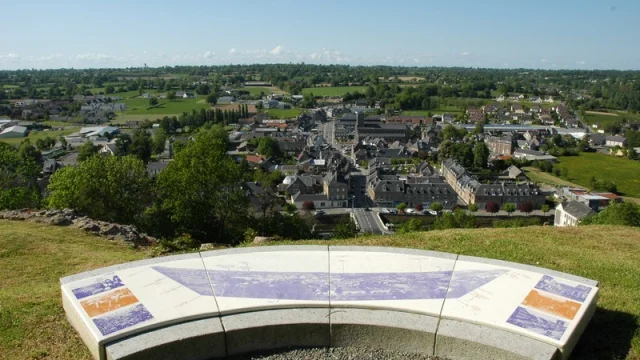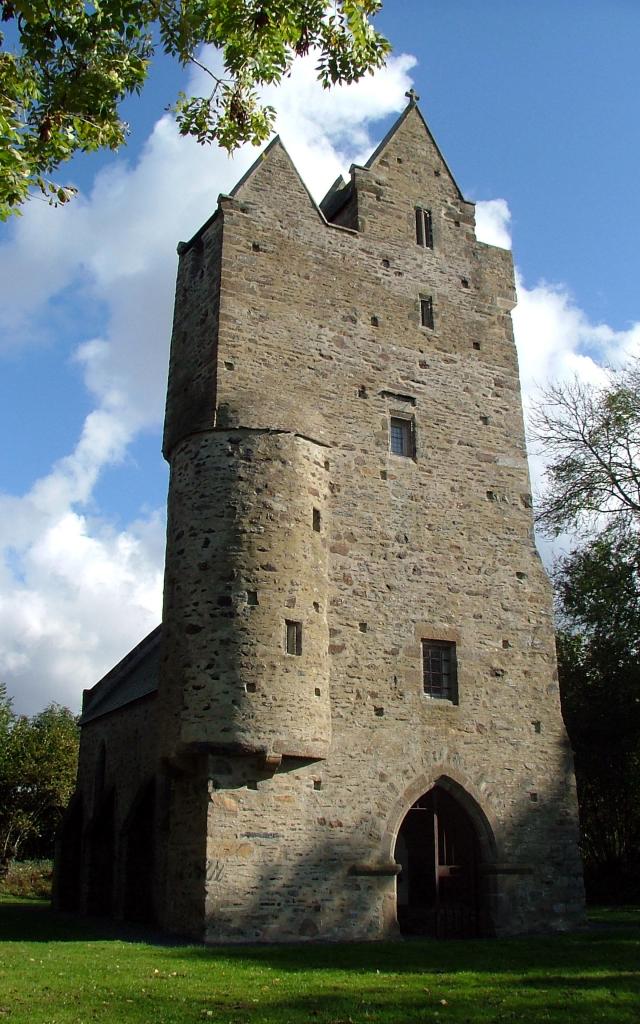 A medieval stone tower with an arched entrance and small windows. The tower is located in a park with trees and green grass. The sky is blue with a few clouds.
A medieval stone tower with an arched entrance and small windows. The tower is located in a park with trees and green grass. The sky is blue with a few clouds.The hermitage in the past: its history
In the early 13th century (between 1403 and 1418), Philippe D’Argouges, Lord of Gratot, built a chapel dedicated to Saint-Gerbold, a saint who was bishop of Bayeux. In the 17th century, the chapel was converted into a hermitage (around 1620). A piece of land donated by a parishioner was added so that the Hermit could cultivate a garden next to it. It was taken from the d’Argouges family during the French Revolution and sold. It was returned to them in the 19th century and naturally became a hermitage again until the 1830s. It was then sold and passed from owner to owner until it fell into a state of ruin at the end of the 19th century. Work was carried out over time, but it was not enough to keep it in good condition. The weather took its toll and the building gradually collapsed, with the vault collapsing in 1947 after several attempts at restoration. In October 1995, with the help and involvement of local associations , the building was listed as a historic monument. In 2000, the General Council of La Manche bought the building and proceeded with its restoration. It was then opened to the public on a more frequent basis. Now managed by the departmental network of sites and museums in La Manche, the exterior can be visited free of charge. Interpretation panels on site will help you understand what a hermitage is and the life of the hermit on site. It’s a peaceful place, ideal for a walk combining nature and discovery!
